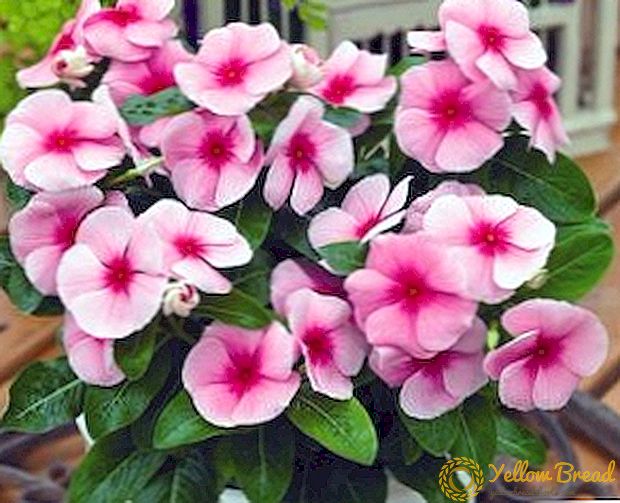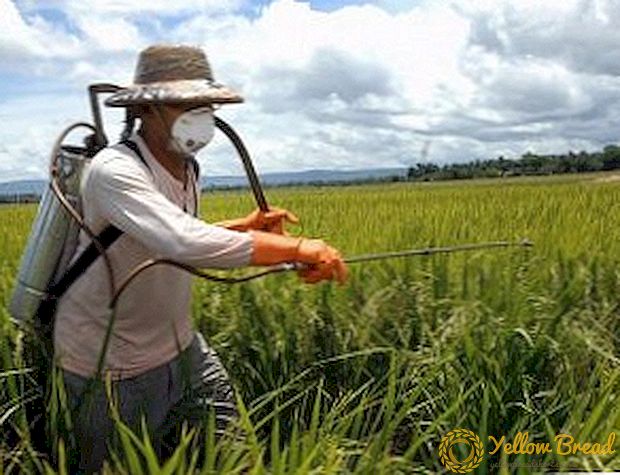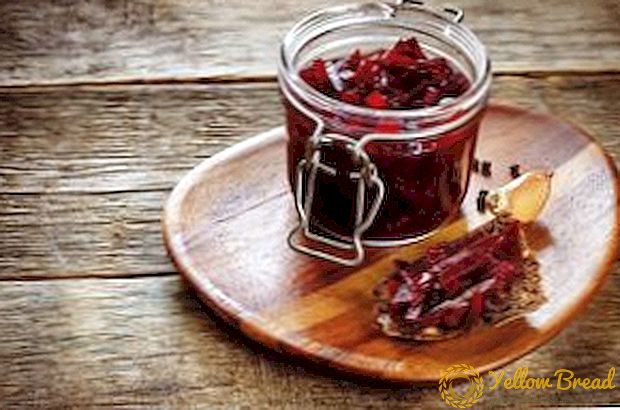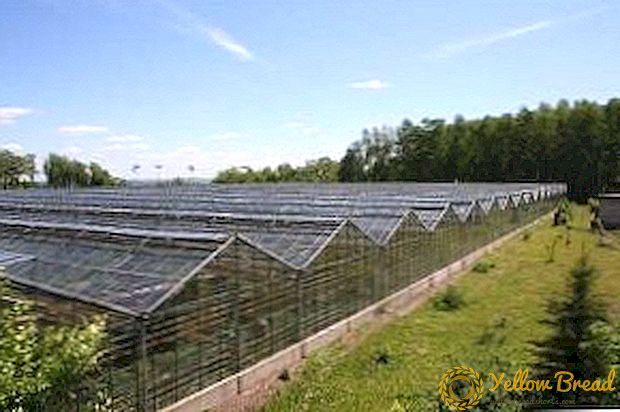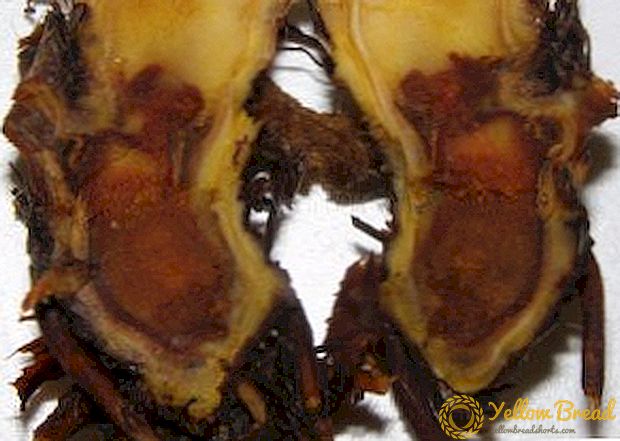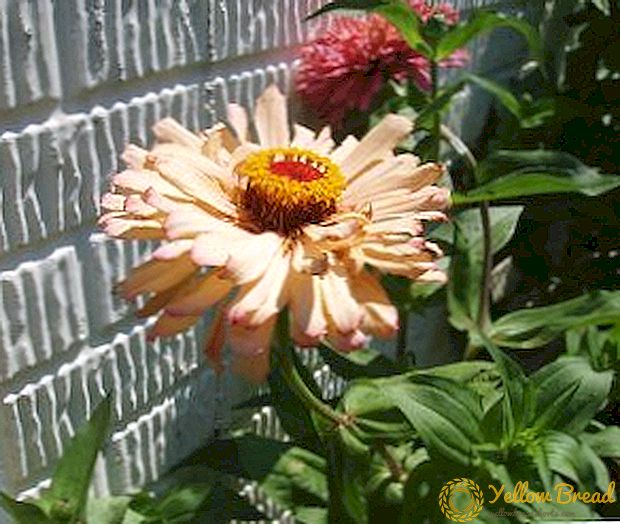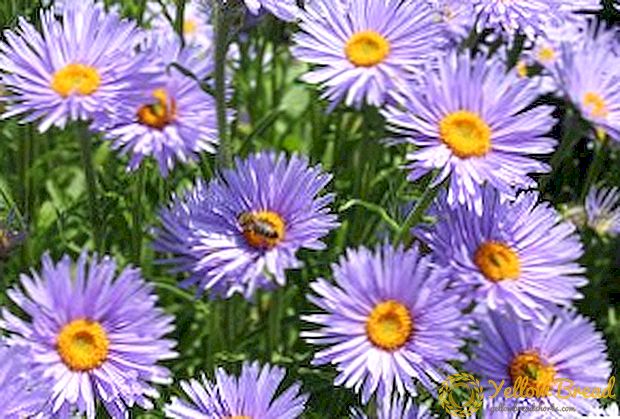 Each grower seeks to grow beautiful, bright plants in a flower bed. In our article, we suggest to get acquainted with such a flower as the alpine aster perennial, and also describe how the planting and care are carried out.
Each grower seeks to grow beautiful, bright plants in a flower bed. In our article, we suggest to get acquainted with such a flower as the alpine aster perennial, and also describe how the planting and care are carried out.
- Plant description
- Plant selection
- Where to plant Astra
- Lighting and location
- What soil to plant
- Planting and reproduction
- Growing from seed
- Division bush
- Cuttings
- How to care for alpine aster
- Watering and soil care
- Top dressing bushes
- Possible diseases and pests
Plant description
One of the main advantages of perennial asters is a long flowering period, which begins in the last decade of May and lasts until autumn. The height of the shrub is approximately 25-30 cm. Most active bloom lasts about 3-4 weeks. 
The plant has medium-sized floral rosettes - their maximum diameter is 4-6 cm. In appearance, the flower is a bit similar to chamomile, which is why it got the second name - alpine chamomile.
Alpine hills are often decorated with a flower, it is characterized by good frost resistance.
Plant selection
Before talking about planting and caring for a flower in the open field, We offer you to get acquainted with the most popular varieties of asters:
- "Albus". A white low flower, its bloom is observed in June and July. It has short stems (maximum 20 cm), the leaves are rather dense.
- "Gloria"It is distinguished by floral rosettes of blue color, inflorescences are small - their diameter is not more than 3 cm.
- "Goliath"The flowers have a delicate purple color, their diameter is 6 cm. The bloom falls on June.
- "Rosea". The plant is characterized by pink inflorescences having a diameter of 4 cm.
- "Happy end". The variety has strong straight stems, a large amount of foliage. Flowering begins in May and lasts until the end of the month.
- "Dunkle Schöne".Flower with dark purple rosettes with a diameter of 3 cm.
- "Ruber". A very bright representative of asters, inflorescences are painted in red-pink color and have a diameter of up to 4 cm.
- Superbus. The shade of flower rosettes is purple-blue, diameter - 3.5 cm.








A huge variety of varieties allows you to choose plants that will fully meet your requirements and wishes.
Where to plant Astra
The pledge of growing beautiful flowers is the right place. This moment should be given special attention if you do not want to replant the plant in the future.
Lighting and location
Astra Alpine Ground Cover prefers well lit placeson which the sun's rays fall. If shaded terrain is selected for the landing, be prepared for the fact that the flowering will not be too abundant, the sockets will be small. Damp places are also not suitable for asters., as in such areas the root system will rot.
What soil to plant
The ideal option for planting would be drained alkaline soil. The pit should be deep enough - no less than 20 cm. In the autumn period, it is necessary to prepare the ground for further planting.  To do this, it is worth digging the ground, fertilizing it with compost or humus - it is recommended to use 3 kg per 1 square meter. In spring, ammonium sulphate and potassium salt are added to the soil, superphosphates are added. One more digging is done. Before planting a plant, it is necessary to loosen the soil.
To do this, it is worth digging the ground, fertilizing it with compost or humus - it is recommended to use 3 kg per 1 square meter. In spring, ammonium sulphate and potassium salt are added to the soil, superphosphates are added. One more digging is done. Before planting a plant, it is necessary to loosen the soil.
Planting and reproduction
There are several ways to breed asters. Consider them in more detail.
Growing from seed
Growing alpine aster seeds is a fairly simple method. Seeds need to be sown in open ground, while sprinkling them with earth should be no more than 1 cm. This procedure is recommended either at the end of spring or at the end of autumn. The distance between the seeds should be approximately 20 cm. After the first shoots appear, they are transplanted to a permanent place.The first time asters bloom only in two years.
Division bush
The best time to hold this event is the end of the flowering period of the plant and before budding.
It is recommended to divide the rhizome every three to four years. Ignoring this procedure will lead to thickening of the bush and the grinding of inflorescences. For the event, you will need to dig up the roots, remove all unsuitable parts, and process the rhizomes with disinfectants. It is possible to plant a plant on an initial place only in five years.
Cuttings
This breeding method is more often used in order to preserve the varietal characteristics and characteristics of plants. To do this you will need cuttings from the top of the bush. They must be cut into pieces so that each has a point of growth. Sprouts should be placed in a nutrient soil substrate and cover with plastic wrap.
After their rooting (and this will happen somewhere in November), you can start planting alpine aster perennial in open ground and its cultivation. As soon as the air temperature begins to fall, it is necessary to create a shelter for plants.

How to care for alpine aster
In order for the plants to be healthy and enjoy their flowering, they need the right care.
Watering and soil care
Perennial needs moderate watering. In summer, the flower is watered plentifully, but not too often. On 1 square. m should go 3 buckets of water. In other periods, soil moisture should be exercised when a small crust appears on top.
The important point is loosening the soil.Together with him it is necessary to remove the weeds that grow around the flowers. The loosening itself should not be carried out too deeply - it is enough to fluff a layer of 4-6 cm. It is recommended to perform this procedure after rain. 
Top dressing bushes
Asters need to be fed three times:
- 10-14 days after disembarkation. On 1 square. m of soil requires 10 g of potassium sulfate, 20 g of ammonium nitrate and 50 g of superphosphate.
- During budding. Fertilizer is carried out by superphosphate and potassium sulfate (each 50 g per 1 sq. M).
- As soon as flowering begins, it is worthwhile to carry out the third feeding - with superphosphate, potassium sulfate (50 g each).
Possible diseases and pests
Despite the resistance to many diseases and pests, asters still suffer from some ailments. The most common diseases include the following:
- black leg - refers to the fungal diseases, characterized by blackening and decay of the plant. The fight is to remove infected branches and leaves and the subsequent processing of fungicides;
- rust. A characteristic sign - bloating and drying of the foliage.The plant should be treated Bordeaux liquid;
- Fusarium - refers to fungal diseases in which the flower turns yellow and fades. Affected plants are burned.

Asters often suffer from powdery mildew, a contagious disease. The infection spreads very quickly, and affects other plants. The affected flowers are necessarily removed and the remaining fungicides are treated. It is recommended to use Topaz and Fitosporin.
Asters can become a haven for caterpillars, meadow bugs, drooling pennits. In order to protect a plant, it is necessary to treat it with Karbofos.

Can also be seen on flowers and spider mites. To eliminate it, use "Fitoverm". If you find an attack of naked slugs, you need to collect them with your hands, arrange the bait in the evening using beer, and collect pests from them in the morning.
Now you know what a ground cover aster looks like, how planting and caring for a plant is carried out.Long-term aster will not give you much trouble, it is enough sometimes to pay attention to it, and your flower bed will always be full of bright, beautiful flowers.

